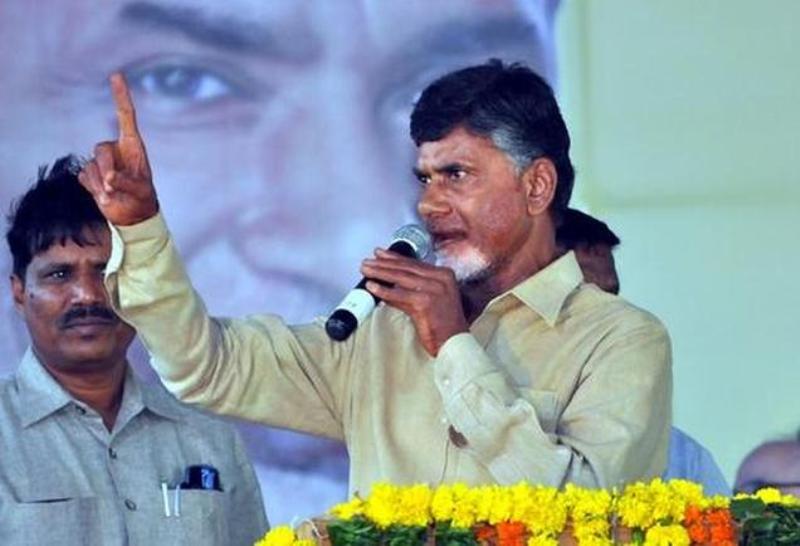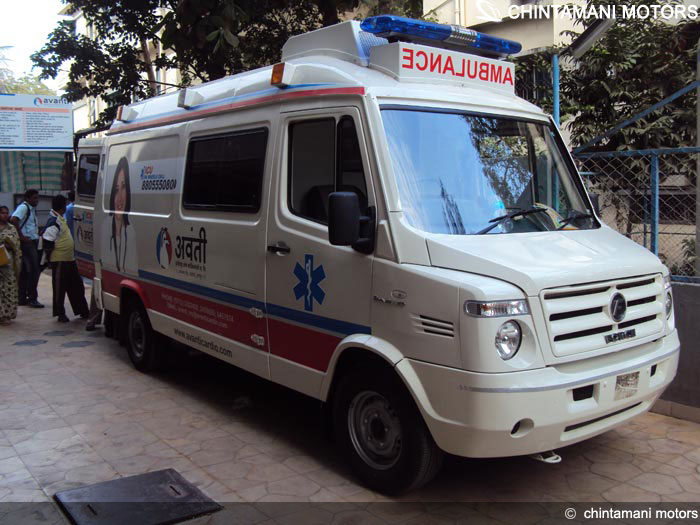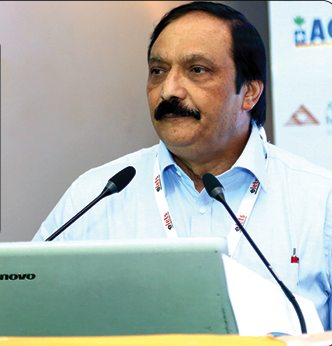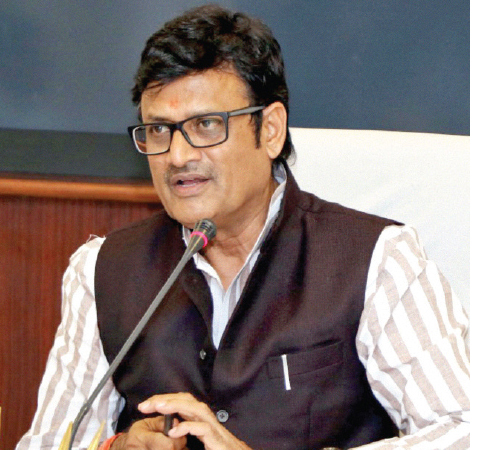 The health insurance sector continues to record good growth and as per the statistics released by the Insurance Regulatory and Development Authority (IRDA), the industry recorded 17.5 percent growth in gross premiums written during the period between April to December FY2011-12, as compared to the same period in the previous financial year
The health insurance sector continues to record good growth and as per the statistics released by the Insurance Regulatory and Development Authority (IRDA), the industry recorded 17.5 percent growth in gross premiums written during the period between April to December FY2011-12, as compared to the same period in the previous financial year
A medical prototype for rural India


Vimal Wakhlu
Chairman & MD,
Telecommunications Consultants India Limited (TCIL)

In health sector we need to focus on real India, that is rural India. We need to have some sort of a model for the real India. Heres that how we involve some models which are in the public private partnership domain and some of the models are working in some of the states on pilot basis where the local villager would be playing a major role ensuring proper health services.
As we are all aware that 70 percent of India lives in villages and there are 6,37,000 villages in India and its not possible to have one doctor per village in
the conventional way. You need to have buildings; you need to have equipments so the model suggested was that we have a local village boy who has done 10th or12th and he can be trained as a paramedical staff. He has medical kit which has all the instruments like blood pressure monitor, glucose meter, ECG machine along with a laptop with multimedia features and a mobile phone. So anybody falling sick in the village can call on toll free number. The person goes to the villager who is sick, he establishes link with main city, call centers those work round the clock and operated by the doctors and the doctor can actually give him patient advice. The paramedical person learns how to go ahead with patients treatment and perform some test and since he has got all these instruments and hence the doctor would be able to see images directly on his screen.
Now if the doctor feels that the patient needs some extra investigation and he is not sure whether the line of treatment he has in mind should be the same, so he can take a specialist along and the specialist can see the patient and in case they feel the patient cannot be treated remotely they know the location of the patient by virtue of GPRS phone of the paramedical person and they can send an ambulance. That is how proper medical service can be provided to villagers of India.
Health Insurance reduces acquisition cost

Bishwajeet Nayak
Head, Health Claims and Networking,
Future Generali
Health insurance regulates a lot of activities in terms of number of committees that have been formed to standardise health insurance parameters, health insurance format and also standardise guidelines in health insurance policies. Importing models for health insurance from other countries have managed to get healthcare suitable for certain kinds of demography in another country. That may not be suitable for our country and for hospitals obviously which are introducing higher medical technology. But if you look at the ground reality we still have large population of consumers who are not clear on what are the rights under healthcare or in health insurances. If you look at the health insurance market, last financial year the general insurance premium overall was around `58,344 crore. The private sector obviously contributing little more than the public sector. If we look at the health insurance premium, presently the growth has been at almost 19 percent. The pri private sector is obviously growing at a higher rate because you have a dictate from the government for the public sector that reduces the loss ratio.
The challenge in health insurance is that when we discuss health insurance, we always speak about loss ratio its never about making profit in it. Obviously this has created an investment opportunity for hospitals. Health insurance is now moving towards reducing acquisition cost to direct marketing web sales a lot of health insurance are now trying to approach customers by passing the traditional agencies methods. There was a Third Party Administrator Model which came up in 2001 when the insurance industry got privatised. The TPA model obviously was aimed at reducing cost bringing in more strict control in system. But what it ended up as in, probably in five years till 2006 was that increase leakages. Now entire public sector is moving towards in-house servicing they have setup joint venture In health sector we need to focus on real India, that is rural India. We need to have some sort of a model for the real India. Heres that how we involve some models which are in the public private partnership domain and some of the models are working in some of the states on pilot basis where the local villager would be playing a major role ensuring proper health services. As we are all aware that 70 percent of India lives in villages and there are 6,37,000 villages in India and its not possible to have one doctor per village in the conventional way. You need to have buildings; you need to have equipments so the model suggested was that we have a local village boy who has done 10th or12th and he can be trained as a paramedical staff. He has medical kit which has all the instruments like blood pressure monitor, glucose meter, ECG along with LIC where the public sector will have its own company to service its policies. To make the market stable health insurance we need to have product development linked to the customer based and what service level expected.
Better delivery of healthcare

Dr T S Selvavinayagam
Joint Director,
Chief Minsiters Comprehensive
Health Insurance Scheme
Hospital based provision of care may not be a reliable option in the long run. It is not that the government hospitals may not be able to compete with the private hospitals for various reasons – it could be the policies, it could be the leadership, it could be the institutional arrangements even they may not be able to adopt the changing
situation. However, this is not a permanent phase and there are always possibilities to change.
The idea is that you will not be paying unnecessarily, unwanted and list qualified services. The important thing which we do on cost containment is provision of ambulatory care or OP services that are shifting from in-patient to the outpatient.Now we are linking it to the grades of the hospitals so we are very sure that we are paying to the near normal level. When we come on quality issues as we have online empanelment, monitoring and all but need is regular
assessment recertification on a regular basis.
If we talk about IT we are using IT, at almost all the levels like online empanelment, biometric enrolment, smart card, de- duplication, electronic pre-authorisation, claims approval & payment, call centres, electronic patient records, cloud computing, and monitoring field functionaries through video surveillance etc. All these things are there but we have further scope to move in where we can use IT for developing a protocol. The main purpose is that necessary message reaches the public. They should know where to get treatment, when to get treatment and how to get treatment. Finally I want to say insurance is here. Its going to expand but what we should remember is that it is not a replacement to the existing system, it is only supplementary to the system and if you keep it in the concept, develop the Government hospital, develop the insurance , definitely we will be in a position to deliver the better cap.
UIDAI enables better functioning

RS Sharma
Director General & Mission
Director,
Unique Identification Authority of India (UIDAI)
The UIDAIs mandate is to issue every resident a unique identification number linked to the residents demographic and biometric information, which he can use as his identity them anywhere in India, and to access a host of benefits and services.Aadhaars guarantee of uniqueness and centralised, online identity verification would be the basis for building these multiple services and applications, and facilitating greater connectivity to markets. It would also give any resident the ability to access these services and resources, anytime, anywhere in the country.
The Aadhaar can help poor residents easily establish their identity to banks. As a result, banks will be able to scale up their branch-less banking deployments and reach out to a wider population at lower cost. For example, provide the identity infrastructure for ensuring financial inclusion across the countrybanks can link the unique number to a bank account for every resident, and use the online identity authentication to allow residents to access the account from anywhere in the country. An efficient, cost-effective payment solution is a dire necessity for promoting financial inclusion. The Aadhaar and the accompanying authentication mechanism coupled with rudimentary technology application can provide the desired micropayment solution. This can bring low-cost access to financial services to everyone, a short distance from their homes.
Aadhaar would also be the foundation for the effective enforcement of individual rights. A clear registration and recognition of the individuals identity with the state is necessary to implement their rights “ to employment, education, food, etc. The number, by ensuring such registration and recognition of individuals, would help the state deliver these rights. The Unique Identification Number (Aadhaar), which identifies individuals uniquely on the basis of their demographic information and biometrics will give individuals the means to clearly establish their identity to public and private agencies across the country. It will also create an opportunity to address the existing limitations in financial inclusion.
Be a part of Elets Collaborative Initiatives. Join Us for Upcoming Events and explore business opportunities. Like us on Facebook , connect with us on LinkedIn and follow us on Twitter , Instagram.












